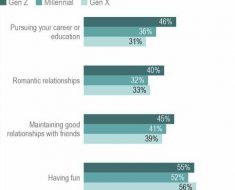- A new study finds that if just 1 or 2 percent of the population gets COVID-19, it could decrease life expectancy.
- During the 1918 flu pandemic, life expectancy dropped 11 years.
- Experts say it’s still too early to know how today’s pandemic will affect life expectancy.
The COVID-19 pandemic could cause a short-term decline in life expectancy in some of the world’s hardest-hit regions, according to a new study by researchers affiliated with the International Institute for Applied Systems Analysis.
The
Researchers say that unless the spread of the disease is contained, the pandemic will likely lead to reduced life expectancy in severely affected regions.
What the study found
For the study, researchers built a model that simulated several probabilities: contracting the new coronavirus that causes COVID-19, dying from it, or dying from another cause within a period of 1 year — all the while taking into account different COVID-19-related death rates for different age groups.
The researchers found that only a 2 percent rate of infection could cause a decline in life expectancy in countries where average life expectancy is high, generally hovering around 80 years.
At higher rates of infection, the impact on life expectancy would be greater, particularly in Europe and North America, two continents with large, rapidly aging populations.
“Our study provides the first assessment of the potential impact of COVID-19 on period life expectancies according to a range of scenarios of prevalence rates over a one-year period,” said Guillaume Marois, PhD, associate professor at the Asian Demographic Research Institute of Shanghai University, and the study’s lead author.
Marois says an analysis of the impact of COVID-19 on life expectancy is an alternative way to quantify its cost on human life.
“This study also enables us to compare the scale of the impact with previous epidemics, such as the 1918 influenza pandemic and the 2014 Ebola virus outbreak,” he said.
The
The 2014 Ebola virus, which affected several countries in West and Central Africa, led to a drop in life expectancy of between 1.6 and 5.6 years in Liberia, he notes.
To date, more than 6.8 million people in the United States have had COVID-19. More than 200,000 have died.
Unlike the 1918 flu pandemic, which mostly affected younger people ranging in age from their teens through their early 40s, the coronavirus outbreak has been particularly devastating to older adults, says J. Alex Navarro, PhD, assistant director of the Center for the History of Medicine at the University of Michigan. He adds that the average age of persons affected by the 1918 flu pandemic was 28.
“If it was mostly influencing the elderly, we still would have seen a drop (in life expectancy), but not as dramatic,” he said.
According to the
And in the United States, the pandemic has had a disproportionately high impact on Black, Latino, and Native Americans.
Navarro believes the biggest declines in life expectancy will be seen in these communities of color, and believes the countries with the highest number of cases will have the greatest declines of life expectancy.
Dr. William Schaffner, a professor of preventive medicine and infectious diseases at Vanderbilt University in Nashville, Tennessee, said of the study: “It’s the first model that I’ve seen that looks at a global view of mortality. As such, I think it is very interesting, fascinating. It’s probably not the last word, but it is a strong first word.”
Schaffner says the last time there was this type of impact on the overall death rate of the population was “when HIV came on the scene” more than 30 years ago.
“It affected young adults principally. It reduced the life expectancy of many young adults in a substantial way,” he said. “As I read this paper, I said something like that is happening again, except it is happening in older adults.”
More research needed
Navarro says one potential limitation of the study is that it relies on a simulation model that the authors constructed.
“Models are not always accurate because, by nature, they are built to be predictive and utilize data that exists at the time the model is constructed,” he said. “That data may or may not always be the best or the most accurate.”
Schaffner calls the researchers’ model “very clear.”
But he adds it may end up needing to be revised if COVID-19 starts to spread rapidly in developing countries.
Schaffner points out that in many developing countries, people often live in crowded conditions where the virus could spread more easily compared to more developed countries.
“I wouldn’t be surprised if they revised the model to show more impact, particularly among younger adults in the developing world,” he said.
Source: Read Full Article





